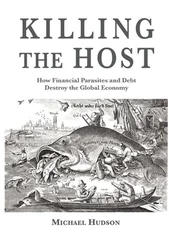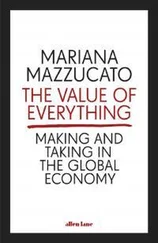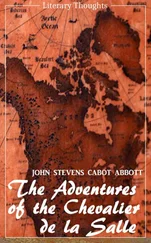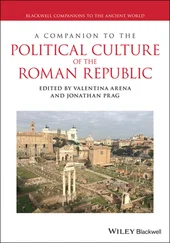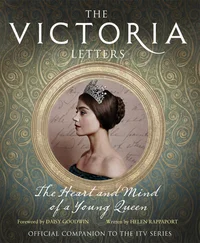A Companion to the Global Renaissance
Здесь есть возможность читать онлайн «A Companion to the Global Renaissance» — ознакомительный отрывок электронной книги совершенно бесплатно, а после прочтения отрывка купить полную версию. В некоторых случаях можно слушать аудио, скачать через торрент в формате fb2 и присутствует краткое содержание. Жанр: unrecognised, на английском языке. Описание произведения, (предисловие) а так же отзывы посетителей доступны на портале библиотеки ЛибКат.
- Название:A Companion to the Global Renaissance
- Автор:
- Жанр:
- Год:неизвестен
- ISBN:нет данных
- Рейтинг книги:5 / 5. Голосов: 1
-
Избранное:Добавить в избранное
- Отзывы:
-
Ваша оценка:
- 100
- 1
- 2
- 3
- 4
- 5
A Companion to the Global Renaissance: краткое содержание, описание и аннотация
Предлагаем к чтению аннотацию, описание, краткое содержание или предисловие (зависит от того, что написал сам автор книги «A Companion to the Global Renaissance»). Если вы не нашли необходимую информацию о книге — напишите в комментариях, мы постараемся отыскать её.
An innovative collection of original essays providing an expansive picture of globalization across the early modern world, now in its second edition A Companion to the Global Renaissance: Literature and Culture in the Era of Expansion, 1500–1700, Second Edition
Companion’s
A Companion to the Global Renaissance
cum
A Companion to the Global Renaissance: Literature and Culture in the Era of Expansion, 1500–1700, Second Edition
A Companion to the Global Renaissance — читать онлайн ознакомительный отрывок
Ниже представлен текст книги, разбитый по страницам. Система сохранения места последней прочитанной страницы, позволяет с удобством читать онлайн бесплатно книгу «A Companion to the Global Renaissance», без необходимости каждый раз заново искать на чём Вы остановились. Поставьте закладку, и сможете в любой момент перейти на страницу, на которой закончили чтение.
Интервал:
Закладка:
At Michigan State University, my special thanks to my colleague Pete Johnston for his generosity and technical genius in preparing images for the volume. Gratitude to the Special Collections at MSU Libraries for their assistance at every stage of this project. And finally, appreciation to Sandra Beals for her wonderful, painstaking work in formatting the chapters for submission.
Thanks also to St. Catherine’s College Oxford, where I was a Visiting Fellow in the English Department, 2019 (Michaelmas Term), and during my fellowship I prepared this second edition for a new contract.
In 2009, I dedicated this book to my parents, who were global, cosmopolitan citizens of the world. I dedicate this edition to their memory.
Preface
I revisit the global Renaissance in this second edition, recognizing that in the past decade, including in our recent tumultuous times, the horizons of our world have expanded to include many more voices, vistas, and experiences. In the field of early modern studies, these shifts have meant several realignments in our disciplinary formations, with an increasing emphasis on global interconnections and cultural cross-pollinations, as well as a renewed focus on the lineages of Western colonialism over lands they “discovered.” In the introduction to the first edition of A Companion to the Global Renaissance: English Literature and Culture in the Era of Expansion in 2009, I began with a recognition of the sixteenth and seventeenth centuries comprising an era of expansion in the Western world: the volume covered the “discovery” of the New World in the Americas; growing interactions and encounters with the East, ranging from the Islamic empires on Europe’s borders to the far East, from Java to Japan; north and sub-Saharan Africa; and explorations to the North Seas. At the same time, importantly, I welcomed a global “turn” in early modern scholarship, recognizing a radical conceptual shift in our approach to the period. Traditionally, the term “Renaissance” had been deployed to emphasize the revival of classical antiquity and to valorize this resurgence of European art and culture of fifteenth-century Italy as the birthplace of the “Renaissance Man” (Burckhardt, 303–352). My framing argument for the first edition drew on the emerging globally oriented scholarship starting in the late 1990s that led to a more expansive, shifting early modern world picture. Cumulatively, these studies offered an increasingly cross-cultural, global, view – with varying emphases on trade, mercantilism, and cross-cultural exchanges, as well as on ideological struggles involving religious, racial, and social difference (see for example, Dimmock, Jardine, Kamps and Singh, Matar, Smith, and Vitkus).
The repositioned meaning of “Renaissance” that emerged from this perspective was invoked as being more multidimensional and culturally fluid than the one traditionally centered in Italy. It thus questioned the assumption that the Renaissance was a purely Western movement. It recognized, for instance, that while European humanists had a strong interest in recovering their intellectual roots in classical antiquity, academic subjects such as mathematics also intersected with commercial practices based on Arabic and other non-Western technologies and modes of learning in various fields (Parker 9, 40–46; Brotton, 11). Overall, this global “turn” decentered a singular and fixed idea of the Renaissance; it did so by evoking varied cross-cultural encounters that included diverse actors related to Mughal and Ottoman courts, trading companies, Japanese rulers, and Mesoamerican rituals, among several others, while also charting the circulation and exchange of objects comprising the global material culture of the period. Similar recognitions of non-Western contributions, ranging from Muslim Spain, Mamluk Egypt, Ottoman Turkey, and Persia to what is considered the Renaissance have continued apace in early modern scholarship in recent years (Loomba 2019, 3) – an endeavor I continue in this second edition. The term “Renaissance,” which I have chosen to retain as the title for the second edition, is thus loosened from its earlier Eurocentric coordinates to be reclaimed as global within this edition’s wide-ranging chapters.
If in the first edition England was the dominant subject – albeit in shifting relationships with other kingdoms, cultures, and peoples – this second edition, with its original, updated essays and additional chapters, cumulatively decenters England’s place in the global economies of mercantile trade as well as cross-cultural exchanges in the period. With its broad subtitle, Literature and Culture in the Era of Expansion, 1500–1700 , this present edition evokes a transnational perspective. It follows a similar – though more layered and complex – trajectory, marking a departure from the original edition: while still covering English economic expansion and cultural influence, it extends the scope of its investigation, moving beyond England to include intercultural and intracultural exchanges, transactions, and encounters involving major European states, the Islamic kingdoms of the Ottoman, Safavid, and Mughal empires, territories in the Far East, sub-Saharan and North Africa, the Caribbean, and the Americas. This approach charts afresh a more complex discourse of the “global” via expanding networks of travel and traffic, with a further recognition of England’s struggles and rivalries with European nations such as Portugal, Spain, and The Netherlands as well with the aforementioned Islamic empires. England’s belatedness in relation to the Iberian powers is evident in the geographical reach of Richard Hakluyt’s monumental travel compilation, Principal Navigations , in which (in the second edition, 1598–1600) he nationalistically exhorts his countrymen to outpace their rivals: “nowe it is high time for us [England] to weigh our anker … to direct our course … [for the] Atlantic Ocean over which the Spaniards and Portuguese have made many voyages … [with] continuall and yerely trade in some one part of Africa or other for getting of slaves, for sugar, for Elephants’ teeth, grains, silver, gold, and other precious wares …” (Hakluyt 1598–1600, 5). What Hakluyt reveals here can be applied more broadly to the complex workings of the European global imaginary: mercantile trade and conquest, including the enslavement of peoples in the lands Europeans “discovered,” was divisively caught up in fierce commercial and political rivalries between the different powers, even while they often recognized their shared affinities as “white,” Christian nations. Thus, as a telling instance, early modern European slaving practices (also discussed in this second edition) were transnational and transcultural rather than a strictly national phenomenon (Gilroy, 15–17), implicating all the European powers in their economic systems and strained justifications.
Within these conceptual and historical coordinates, the contributions of the second edition map diverse perceptions of the world as global and interconnected from the perspectives and experiences of a wide range of figures. From the early sixteenth century onward, it became increasingly important for explorers, travelers, rulers, courtiers, ambassadors, ministers, missionaries (especially the Jesuits), merchants, mariners, slavers, writers, cartographers, artists, and some women as travelers not only to define themselves in terms of their own local identities but also to consider their experiences and achievements as part of an expanding global framework – often caught up within overlapping expansionist drives of disparate kingdoms and nations. Some sense of their perceptions can be glimpsed in selected unfolding sagas of individual and collective encounters, ranging from hostility to proximity and intimacy. These often occured in distinct settings – royal courts, seashores, ships, islands, markets, cities, trading posts (factories) – while taking a measure of language, gesture, dress, body markings, weapons, armor, or possessions in general. These interactions with “others” cover the gamut of fictional as well historical representations. Reflecting the mutually constitutive relationship between experiential and imaginary engagements within the conditions of global early modernity, these primary accounts of encounters and interactions include plays, poems, moral treatises, policy documents, ethnographic accounts, paintings, travel narratives (including slaving voyages), and religious dialogues, among others. In sum, when mediated through these accounts, the dominant, recurring trope of the encounter in Western travel narratives becomes multifarious and complex in our reappraisal of the global Renaissance.
Читать дальшеИнтервал:
Закладка:
Похожие книги на «A Companion to the Global Renaissance»
Представляем Вашему вниманию похожие книги на «A Companion to the Global Renaissance» списком для выбора. Мы отобрали схожую по названию и смыслу литературу в надежде предоставить читателям больше вариантов отыскать новые, интересные, ещё непрочитанные произведения.
Обсуждение, отзывы о книге «A Companion to the Global Renaissance» и просто собственные мнения читателей. Оставьте ваши комментарии, напишите, что Вы думаете о произведении, его смысле или главных героях. Укажите что конкретно понравилось, а что нет, и почему Вы так считаете.

